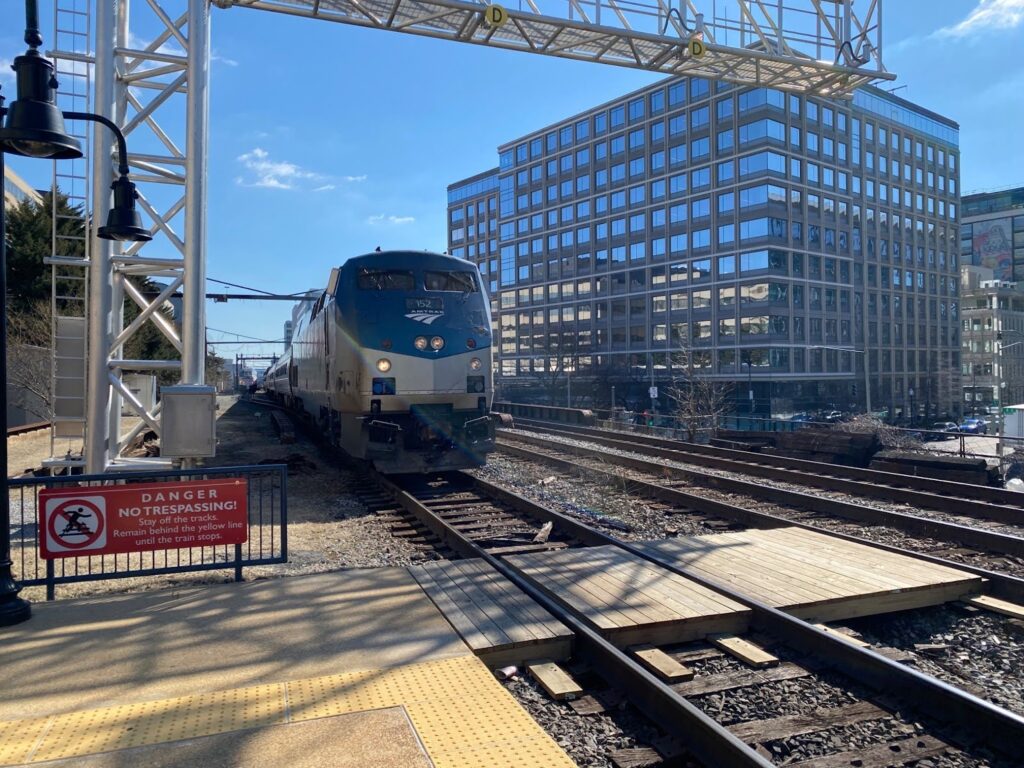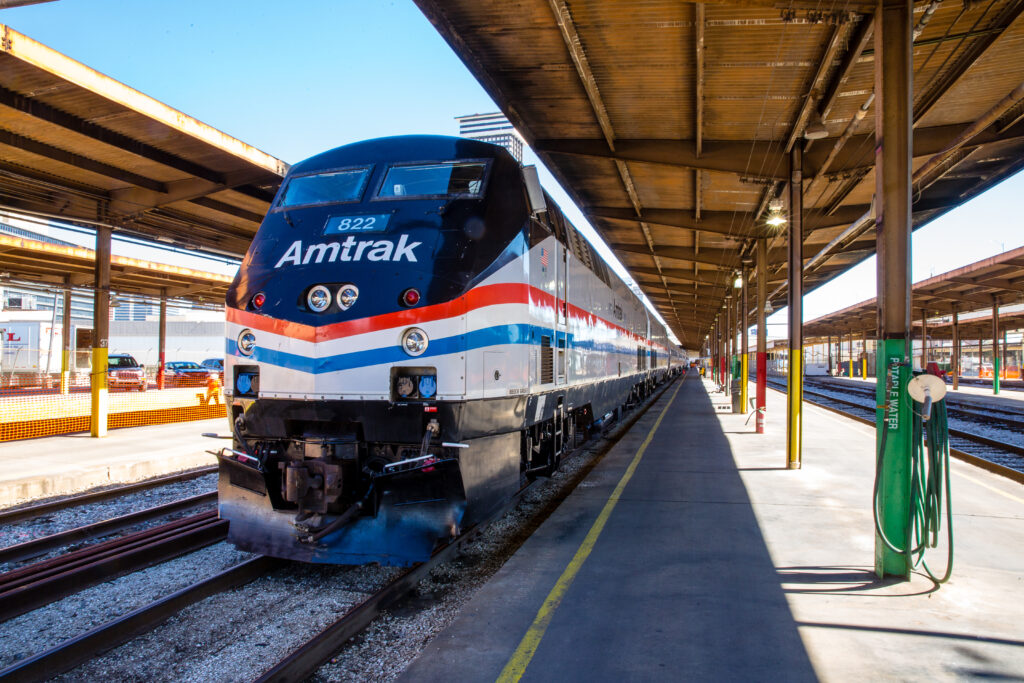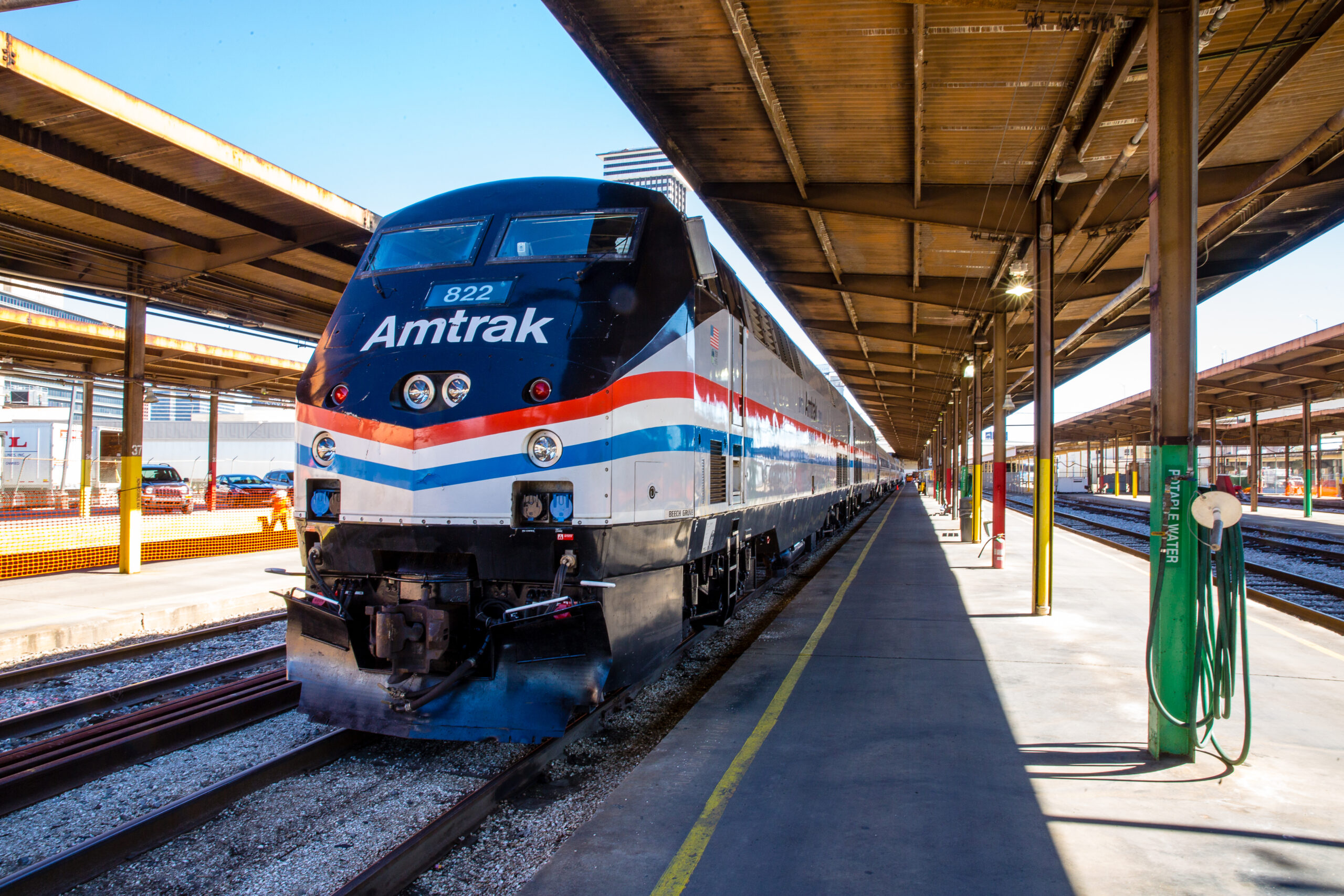
Full speed ahead: How federal leaders can keep building on passenger rail progress

Passenger rail efforts in the Gulf Coast demonstrated tireless commitment to federal advocacy, funding development, and ultimately service implementation. But if our nation’s leaders are truly interested in advancing a national network, they can take action now to support future efforts.
In recognition of recent progress for passenger service in the Coastal South, we’re releasing a four-part series exploring how unified regional and national approaches, supported by local advocacy and sound policy, can help create a successful passenger rail network. This is part four of the series, written by Mehr Mukhtar and London Weier. Read part one, part two, and part three.

In our last three blogs, we outlined the challenges and opportunities in the maintenance and expansion of passenger rail service in the country, with an emphasis on the story of recent achievements in the Gulf Coast. It’s clear that the 2021 federal infrastructure law (Infrastructure Investment and Jobs Act, or IIJA) unlocked a treasure trove of resources for advancing passenger rail in the United States, yet three years later, there’s still a great deal of progress to be made. This blog shares priorities for ensuring that we are making the most of this unlocked promise and possibility by creating a national vision for passenger rail.
National connectivity
Amtrak should continue to maintain and expand the connectivity and geographic coverage of the national network, as stipulated in the language of the IIJA. To ensure that the entire nation is served, both urban and rural, and judged by performance standards appropriate to the region served and type of service provided, the Northeast Corridor should not be treated as a separate entity to the entire national network.
Establish dedicated funding
Unlike public transit, aviation, and highways, passenger rail does not receive a dedicated source of revenue to build out its service. Instead, Amtrak relies on annual appropriations, which occur once each fiscal year. Our passenger rail network is living paycheck to paycheck, and that’s no way to invest in a long-term vision. In order to expand our network to its full potential, passenger rail needs to be treated as a service that has a future. Congress should set up a dedicated source of revenue for the development of passenger rail.
Encourage innovation
There are many private providers that, if given the opportunity, could lend their services and expertise to developing a robust passenger rail network. However, because Amtrak is the only passenger rail provider that can utilize the nation’s existing network of freight rail lines, it’s currently the only viable option to expand passenger rail across the country.
Extending the right-of-access to at least three providers would help spur innovation in passenger rail expansion, introducing new approaches, ideas, and competition. In addition, allowing freight or private providers to be eligible for federal funding for long distance service could further propel expansion.
Representation on the Amtrak Board of Directors
Amtrak’s existing board is not reflective of the geographic diversity of the communities across the nation that it serves or the types of service provided. An unrepresentative board prevents Amtrak from developing and advocating for strategic priorities that represent the interests of all of Amtrak’s users. The guidance laid out in the IIJA for representation on Amtrak’s board should be implemented and enforced.
Standardize the rail system
Right now, rail providers aren’t required to standardize their equipment, which means that any passenger rail network we create may require different equipment depending on the track design or power supply networks. This could lead to a disjointed rail network down the line, where only some trains are able to operate on certain tracks.
To ensure a streamlined customer experience and to make the most of taxpayer investments, equipment for conventional speed and high-speed rail should be standardized, as well as right-of-way infrastructure to ensure interoperability of the national system.
An upcoming opportunity
The 2021 infrastructure law is set to expire in 2026. At that point, our nation’s leaders will need to pass a new law, called the surface transportation reauthorization, to further enhance our nation’s transportation system. Reauthorization will present a monumental opportunity to reassert a consolidated vision for national passenger service. But we should be clear: there’s no need to wait. To make the most of the 2021 infrastructure law’s investments, our leaders can and should begin making progress on the priorities listed above right now.



